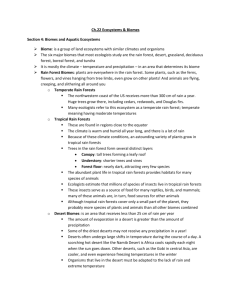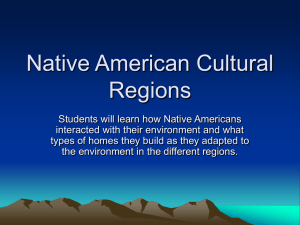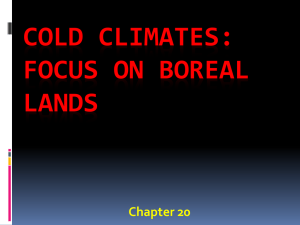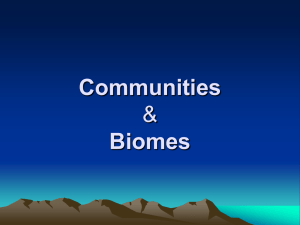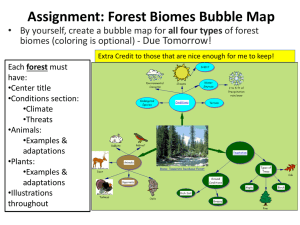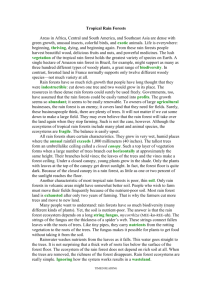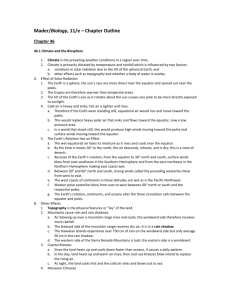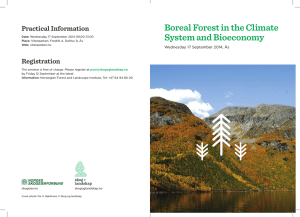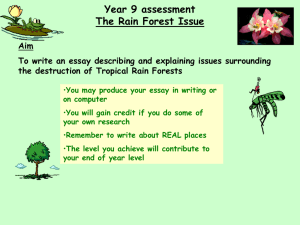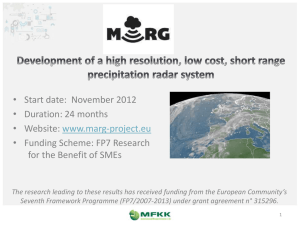File
advertisement
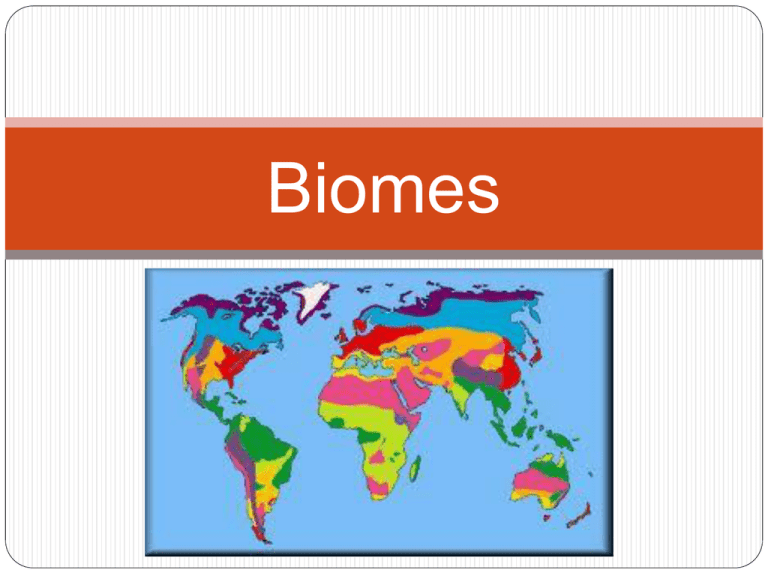
Biomes The Six Major Biomes Introduction to Biomes Biome: group of ecosystems with similar climates and organisms. Six Major Biomes Desert, rain forest, grassland, deciduous forest, boreal forest and tundra. Deciduous Forests Rainfall: 3050 inches Temperature: 82-43°F Location: Eastern United States Canada Eastern Asia Europe Deciduous Forests Deciduous trees shed their leaves to save water during the winter an grow new ones each year. Temperatures vary and there is enough rainfall to support trees and other plants. Variety of plants create mix of habitats Animals: bears, birds, snakes, raccoons, small deer, etc. Boreal Forests Boreal means “northern” and temperatures are low enough that water is frozen much of the year. Most common trees are coniferous trees Boreal forest food chain: Seeds and bark of coniferous trees red squirrel wolf Additional animals: snowshoe hare, moose, beaver, bear, lynx, great horned owl Boreal Forests Their yearly rainfall is at 14-30 in and they have lower temperatures than we do. (14-57°F) Coniferous Forests Location: Rocky Mountains Canada Alaska Just south of the Polar regions Rain Forest Biomes: Temperate Rain Forest Temperate Rain Forest are further north and much cooler compared to Tropical Rain Forest Moderate temperatures Large amounts of rain (300 cm per year) Huge trees: Redwoods, cedars, and firs. Variety of plants and animals Rain Fall averages 158 inches!!! Temperatures: 93-68°F Found in the TROPICS around the equator-that’s why its so warm and humid! Tropical Rain Forests The most biologically diverse and animals live at all different layers of the forest. Some animals live on the forest floor but most live in the canopy Plants: Many plant species provide habitats for various animals. Animals: Millions of species of insects serve as food to reptiles, birds, and mammals. Rainforest Animals and Plants Banana Tree Flying Dragon Bamboo Orchid Jungle Python Chimp Temperate Grasslands Includes grasses and other flowering plants with very few trees. Fire and drought are common. Location: Africa Asia Midwest USA Rainfall: 10-30 inches Temperature: 86-32°F Grasslands support small herbivores and a few larger grass eaters. Animals such as: prairie dogs, bison, giraffe, emu, elephants, antelopes, zebras, kangaroos, and gophers Prairie Dog Kangaroo Grassland are also know as prairies, plains, and savannas. Bison Savannas Rainfall: 59 inches Temperature: 93-61°F Location: Africa Parts of India and South America Animals like giraffes, elephants, zebras, lions and water buffalo. A savanna is a grassland with scattered clumps of trees and seasonal rains Savannas Savannas are home to large herbivores and some carnivores. Deserts Rainfall: Less than 10 inches Temperature: 100-45°F A region that has little or no plant life, long periods without rain, or extreme temperatures, usually found in hot climates. Plants have adaptations to help them hold water- fleshy stems, thorns for protection, roots grow out instead of down and growing far apart from one another. Animals adaptations :active mostly at night. Location: Western USA North Africa Asisa Australia Desert Plants and Animals Prickly Pear Cactus Lappet Face Vulture Gila Monster Cactus Sidewinder Thorny Devil Rainfall: 12-20 inches Temperatures: 54- 15°F Tundra Found near the North and South Poles and is extremely cold and dry. The layer of soil beneath the surface stays frozen ALL the time, called permafrost. Because of this only shallow rooted plants can live here. Animals like small rodents, caribou, birds, wolves, musk ox and insects live here. Tundra Plants and Animals Caribou Yellow Tundra Flower Moss Polar Bear Cotton Plants Siberian Lynx Snow Owl

